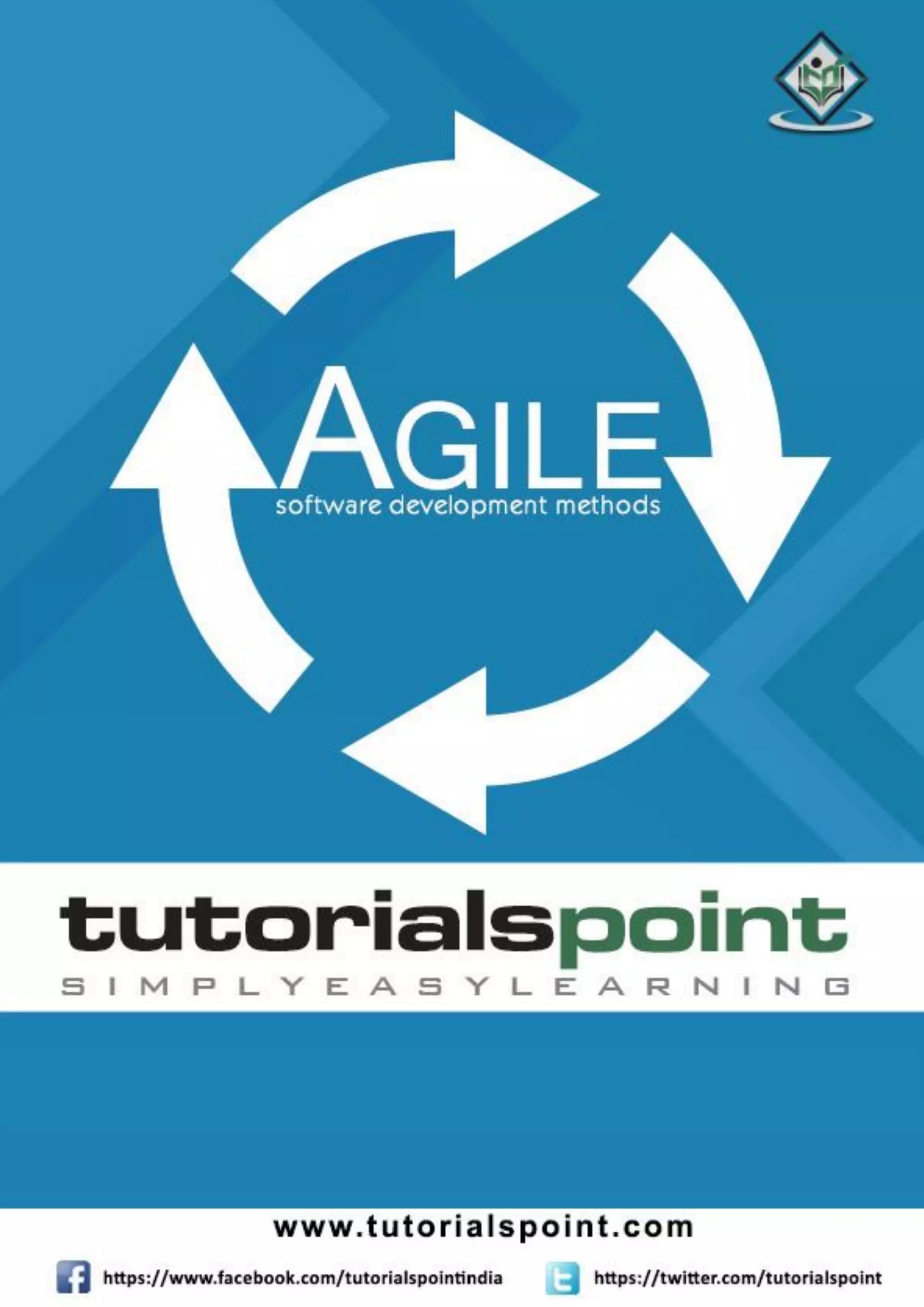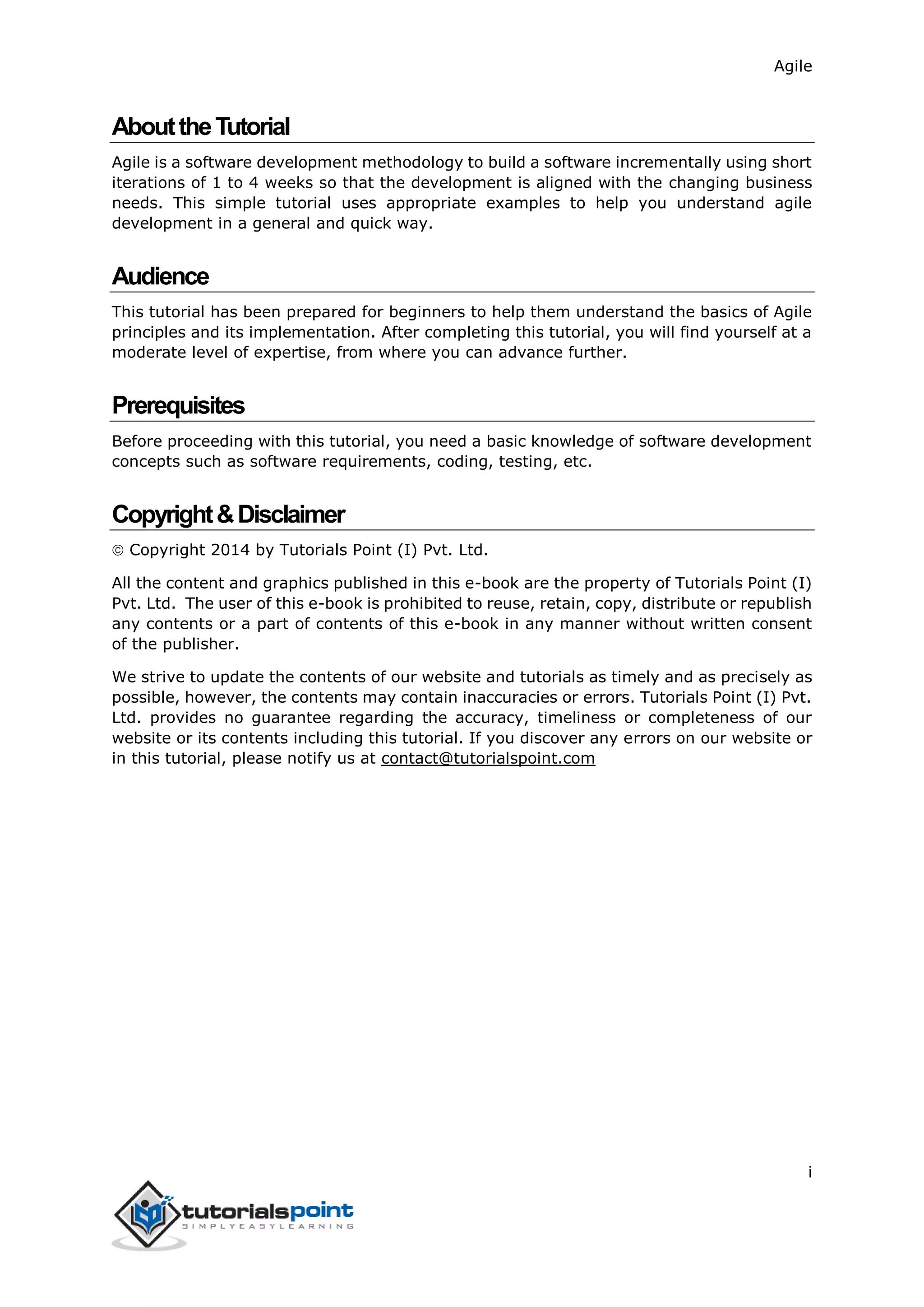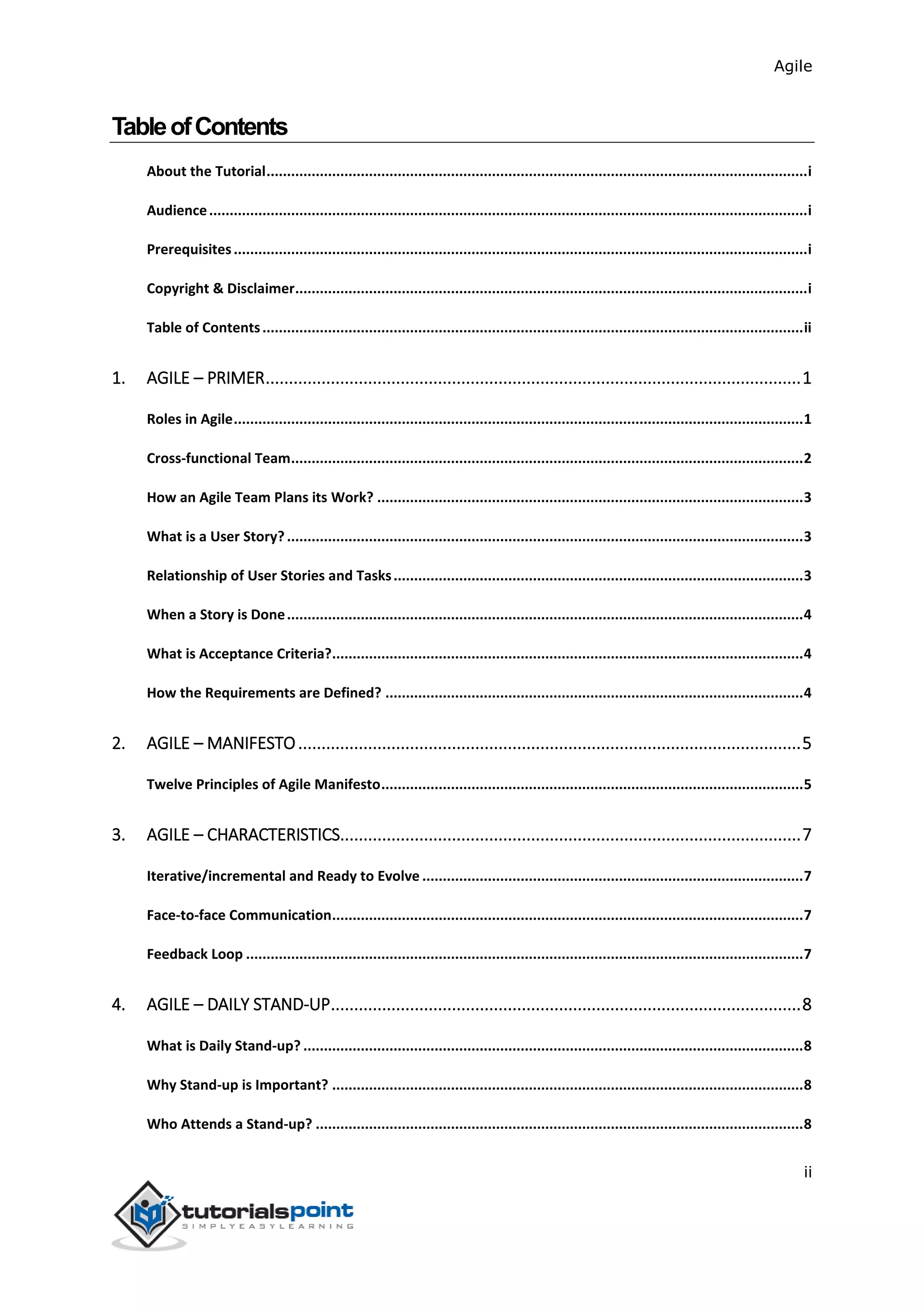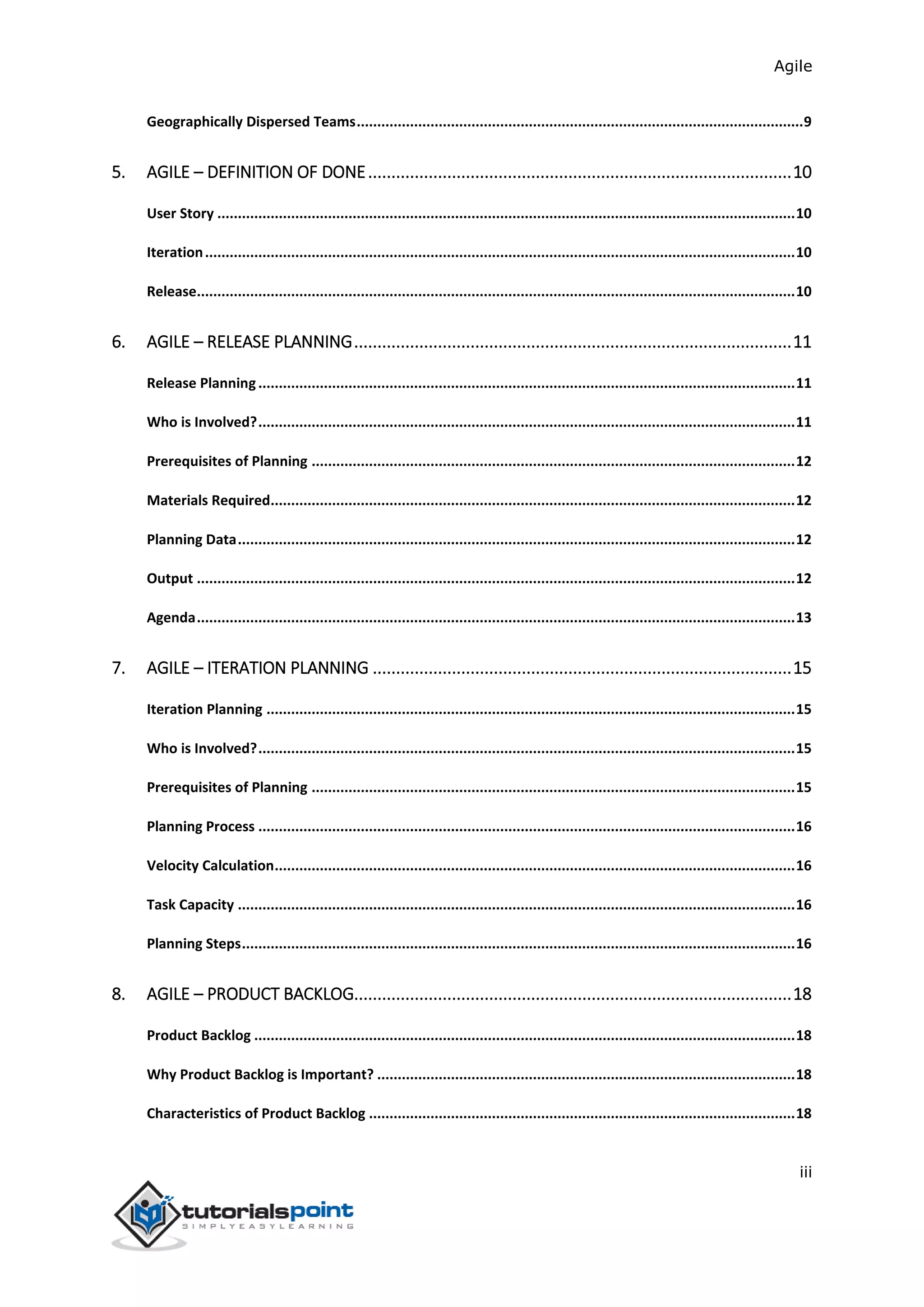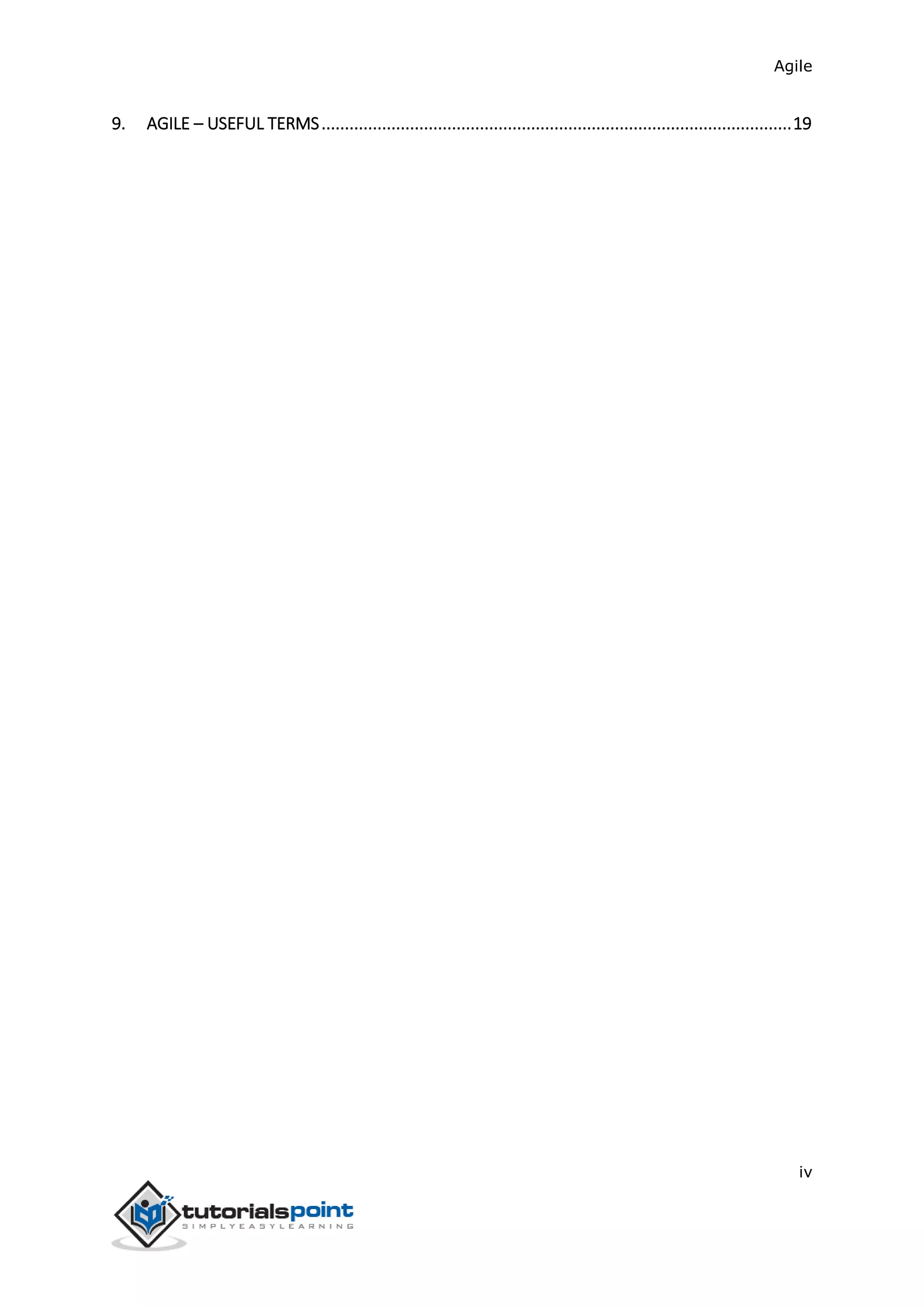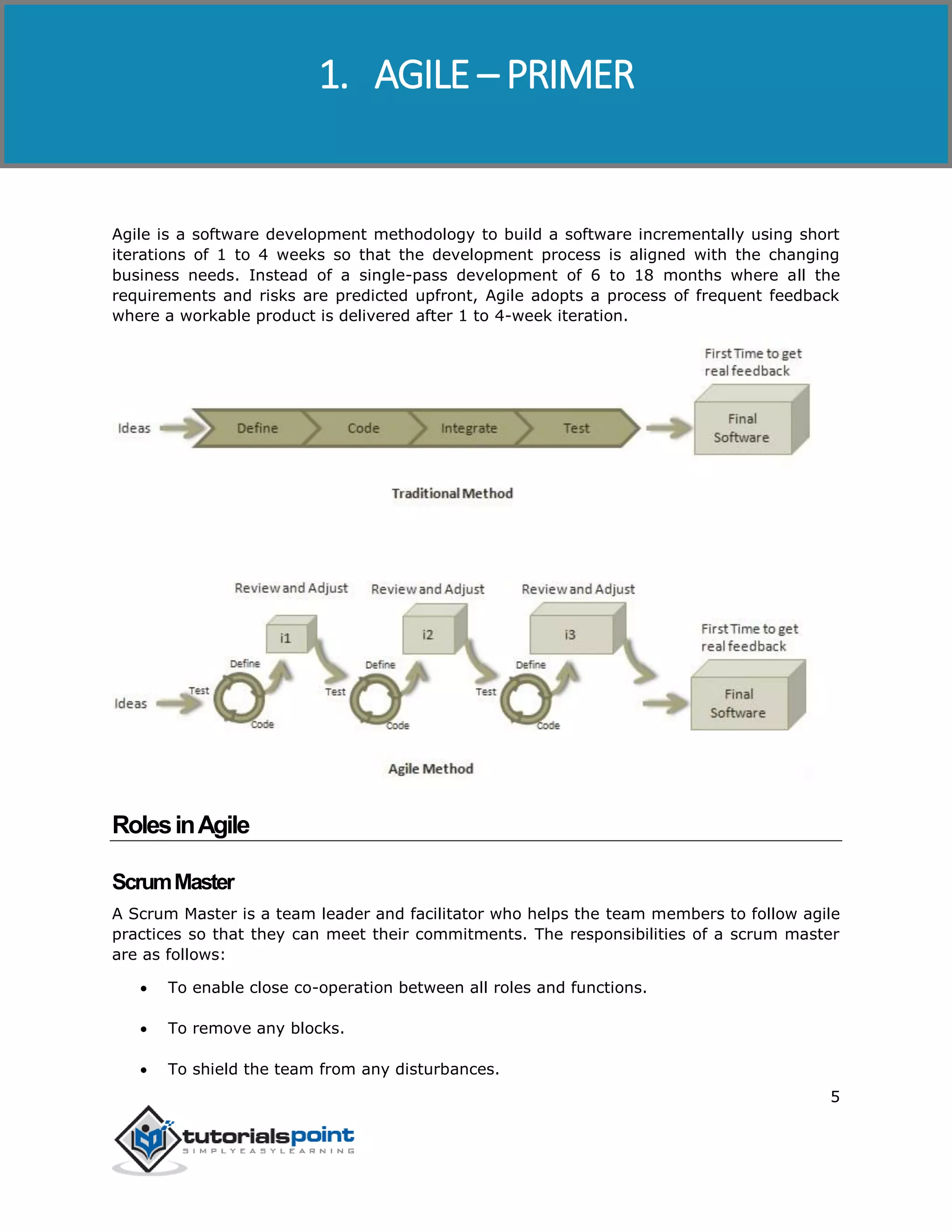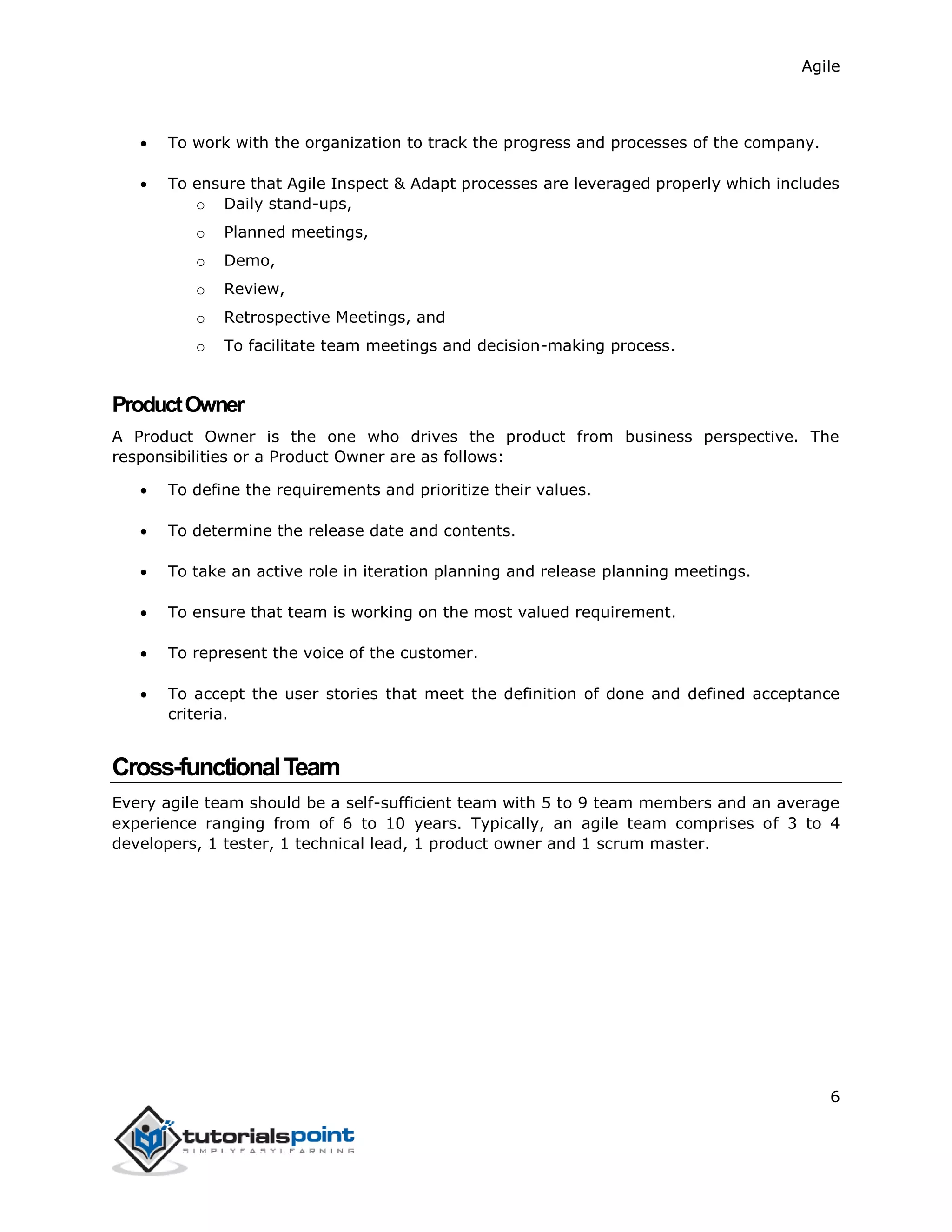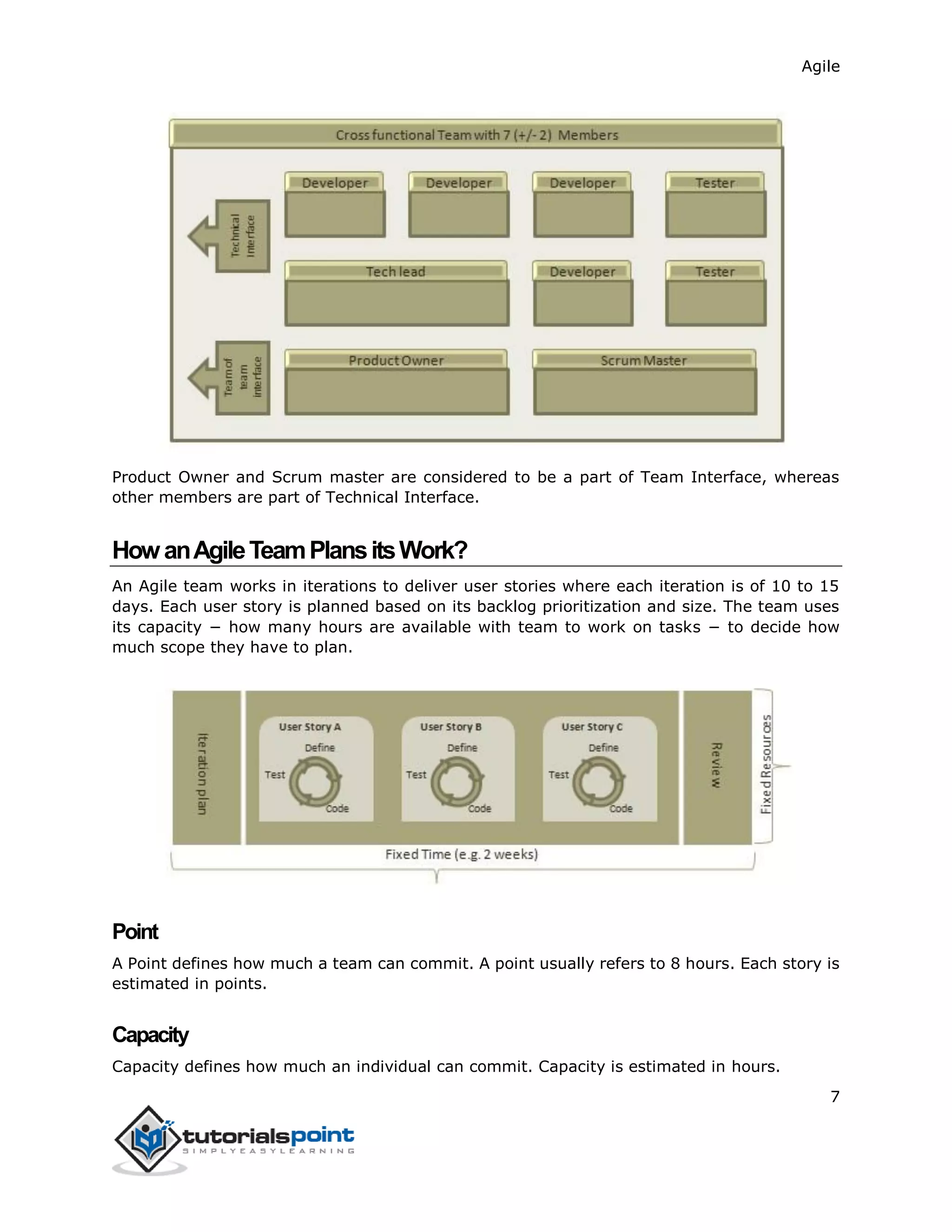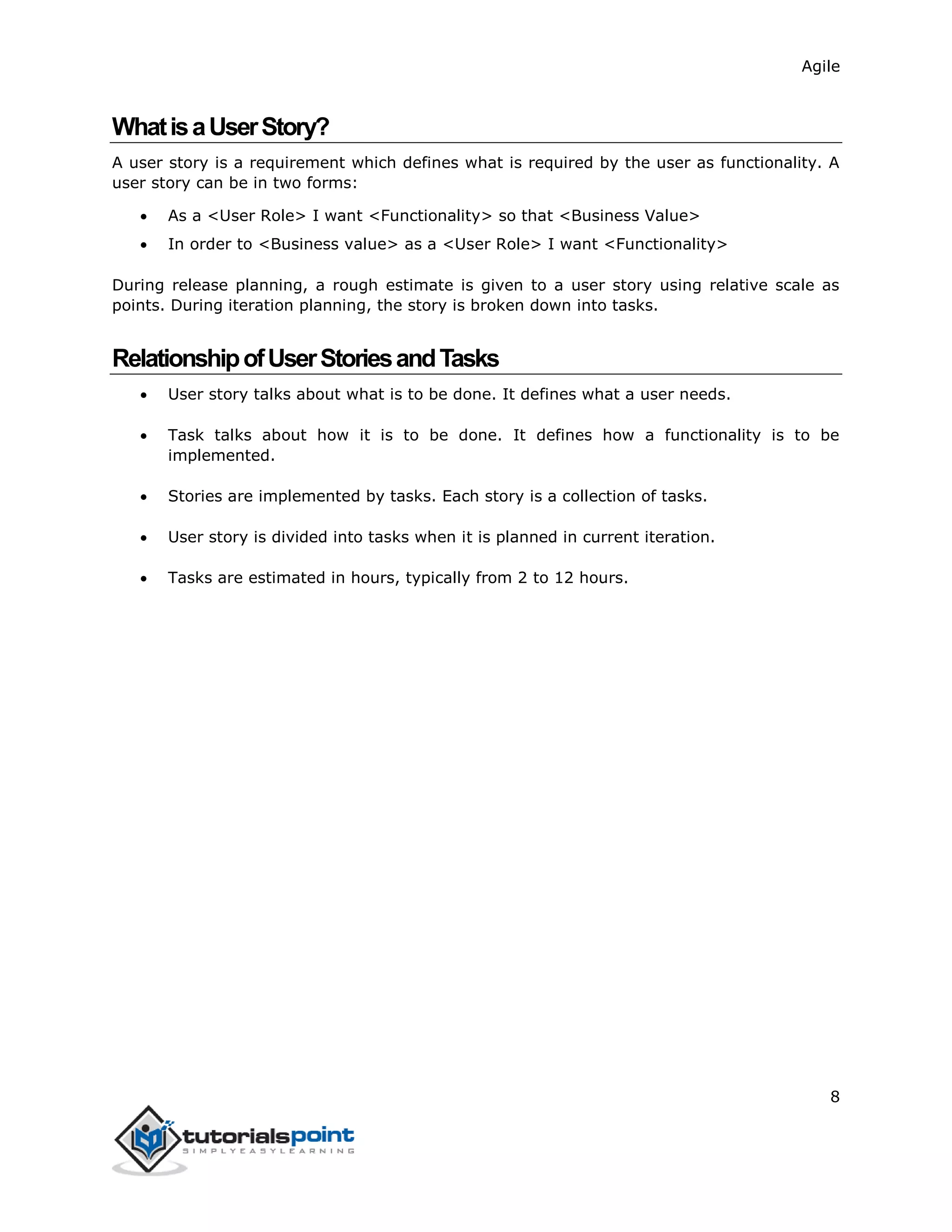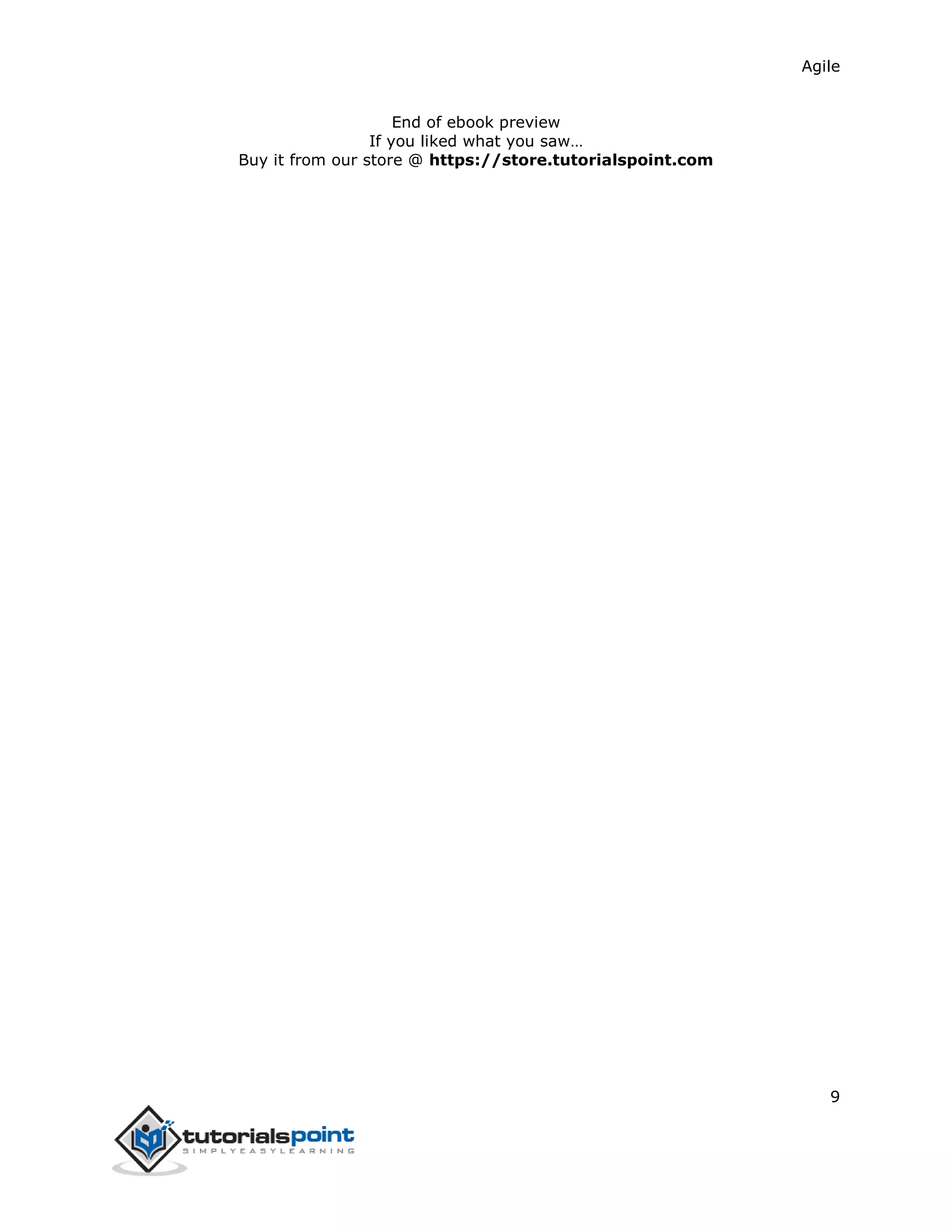This document provides an overview of agile software development methodology. It discusses that agile is used to build software incrementally using short 1-4 week iterations aligned with changing business needs, rather than a single 6-18 month predictive process. It also describes key agile roles like the Scrum Master who facilitates the team and removes blocks, and the Product Owner who prioritizes features. Finally, it explains that agile uses daily stand-ups, demos, and retrospectives to frequently get working software in front of stakeholders for feedback.
